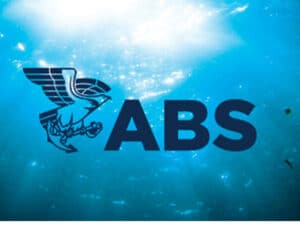
Acting Secnav commits to 355 ship Navy, but not at $2 billion apiece
Written by Nick Blenkey
Acting Secretary of the Navy Thomas B. Modly
In his latest weekly Secnav Vector message, released today, Acting Secretary of the Navy Thomas B. Modly appears to be trying to allay fears raised by recent reports in defense publications suggesting that the U.S Navy may be backing away from the 355 ship battle force goal.
“For the past several years the debate over defining what enhanced naval power really means has centered around the aspirations for a 355 ship Navy,” he writes. “Today, this 355 ship goal is the law of the land, as outlined in the bipartisan ‘Securing our Homeland by Increasing our Powers on the Seas’ Act, signed into law by President Trump in 2018. The 355 target goal was based on our 2016 Force Structure Assessment (FSA), which recommended not only a total number of ships but also the capabilities required to address emerging security threats. We have been working towards this goal over the last several years, but I am not satisfied with the progress we have made in terms of reaching it within a reasonable and strategically relevant timeframe. As a result, I have asked Navy and Marine Corps leadership to come up with a plan to reach this goal within the next 10 years.
“To develop this plan, we will be relying upon the Integrated Naval Force Structure Assessment (INFSA). The INFSA will be the first time the Navy-Marine Corps team has ever worked together to create a truly integrated naval force design. Despite some erroneous recent reporting, all of these initial plans reflect a continued net increase in ships in Fiscal Year (FY) 21 towards our goal of 355 vessels or more, not a decrease.”
“Today, our Navy is less than half as large as when it last faced a major peer competitor in the late 1980s,” says the Vector message. “Meanwhile, U.S. gross domestic product has grown from $5 trillion in 1988 to $19.5 trillion. Our trade by sea has since tripled, from $230 billion to over $880 billion. Almost the entire internet and trillions of dollars in trade are carried today on a largely unsecured network of undersea cables. Four decades later, we simply have a lot more to protect from increasingly capable maritime adversaries who will present challenges to our economic security and indeed, our very way of life.”
But the Vector message later notes that “the climb to an ultimate force structure consisting of 355 ships … is a steep one. We currently stand at 293 ships, up from 275 just a few years ago. To reach, and more importantly sustain, a 355 ship force within a reasonable timeframe could require an additional $20-30 billion in the Navy’s annual budget of approximately $160 billion. The simple fact is that a fleet of 30% more ships is going to require a much bigger topline to build, man, operate, and sustain.
“The mathematical truth is that based on current budget expectations, we can only build and sustain approximately 305 ships by traditional measures of what counts as a ‘battle force ship.’ Therefore, we are compelled to look at the 2016 FSA 355 ship goal differently, and to redefine whether that number is relevant to what it truly means to serve as an effective integrated future naval force.”
“In reexamining our 355 ship goal, we must consider how to shift costs away from high-end platforms to a larger number of smaller, but still highly capable ships. In FY18 dollars, the average cost of a ship during the Cold War ‘600 ship Navy’ era was approximately $1 billion. It is now twice that. This trend is not sustainable, so we must shift the cost curve on all of our ships in the other direction – and they must deliver the distributed capabilities we require. Such a shift could allow broader presence, reduced manning, and longer reach through a significant increase in hypersonic weapons, greater stealth, and advanced anti-ISR capabilities. All this must be achieved through lower acquisition and sustainment costs – a strategic imperative.
“We are also considering how unmanned surface and subsurface platforms not traditionally counted as ‘battle force ships’ (mostly because they have never existed at scale) should figure into our force mix. These platforms will not only allow us to distribute and conceal lethality, but also do so at reduced cost and in ways multiplied through its integration and interdependencies with the Joint Force. Whether it consists of 305 ships, 355, or 500, it is difficult to imagine a future scenario in which American naval power will not be the critical piece of an integrated multi-service, multi-domain national security campaign for lasting peace and prosperity.”
Read the full Vector message HERE




